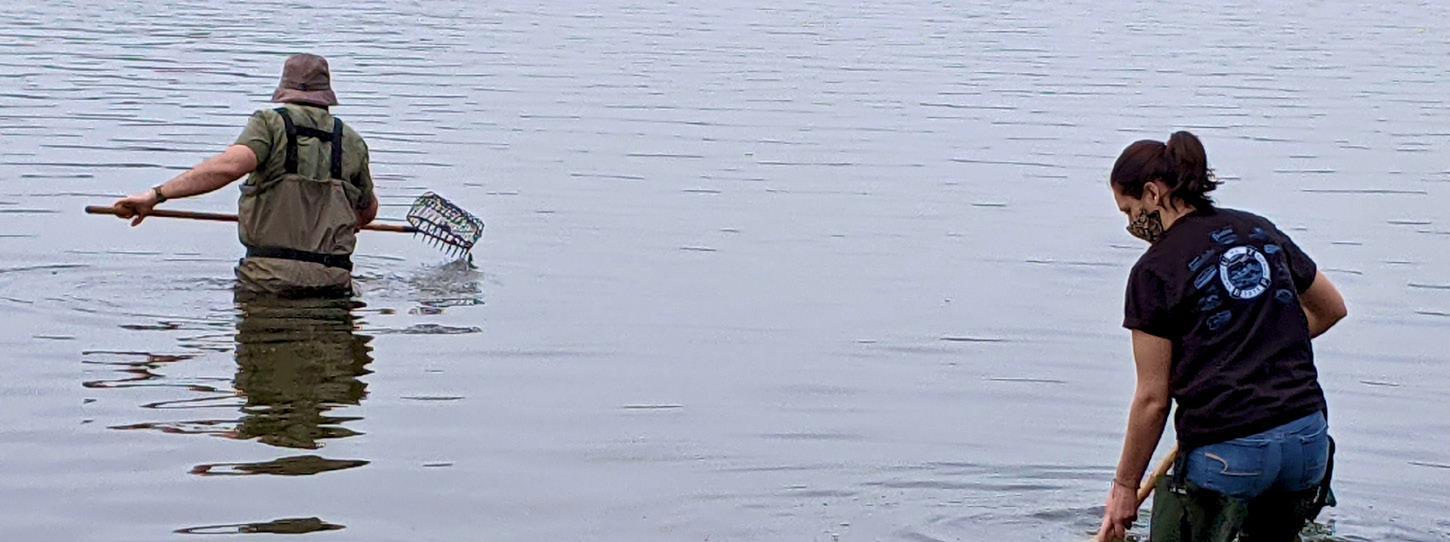
1 minute read
TIMING IS EVERYTHING
Scientists from Partnership for the Delaware Estuary and Philadelphia Water Department gather freshwater mussels from a river. PDE lately has been observing the reproductive stages of mussels, and their timing.
PDE’s shellfish team observes stages and timing of freshwater mussel reproduction
Advertisement
By Kurt Cheng, PDE Shellfish Coordinator
Partnership for the Delaware Estuary’s (PDE) shellfish team works with a variety of freshwater and saltwater mussel throughout the year. Lately, the team has been hard at work with something a little new — observing reproductive stages of different freshwater mussels species and the timing of these stages in nature.
An important part of the freshwater mussel life cycle is the development of mussel larvae, or “glochidia.” The timing of when a female mussel’s eggs become fertilized and start to develop into glochidia can be different for many species and each stage is unique. In this case, the shellfish team has been working with a common mussel species, the Eastern Elliptio (Elliptio complanata). Learning when female mussels are carrying larvae helps the science team produce more mussels in its hatchery in Philadelphia.
A key term comes into play with this work — gravidity. Gravidity is a term for fish, amphibians, and freshwater mussels to differentiate between females with eggs or larvae inside of them and those without them. Sometimes, it can be difficult or even impossible to tell the difference between a male and female mussel unless the female is carrying eggs or larvae. Females carrying young have inflated, or gravid gills, because their eggs are stored there. PDE’s scientists assess a mussel’s reproductive status by gently opening a mussel’s shell to take a quick peek at its gills. If the gills are inflated, the team carefully collects a sample of the contents and view them with a microscope. The contents of the gills are often a mixture of mussel eggs, immature mussel larvae, developing mussel larvae, and mature mussel larvae. There are still many unknowns to explore in mussel reproduction and many factors to discover such as the ratio between males and females, but knowing will help to preserve mussel populations.



